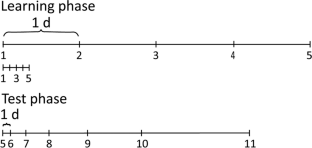2024-08-07 タフツ大学
<関連情報>
- https://now.tufts.edu/2024/08/07/sugar-sweetened-beverage-intake-increasing-globally-among-children-and-teens
- https://www.bmj.com/content/386/bmj-2024-079234
1990年から2018年までの185カ国の子供と青少年における砂糖入り甘味飲料の摂取:人口に基づく研究 Intake of sugar sweetened beverages among children and adolescents in 185 countries between 1990 and 2018: population based study
Laura Lara-Castor, postdoctoral scholar;Renata Micha, professor;Frederick Cudhea, biostatistician;Victoria Miller, research fellow;Peilin Shi, biostatistician;Jianyi Zhang, biostatistician;Julia R Sharib, researcher;Josh Erndt-Marino, researcher;Sean B Cash, professor;Simon Barquera, director;Dariush Mozaffarian, professor;on behalf of the Global Dietary Database
The BMJ Published: 07 August 2024
DOI:https://doi.org/10.1136/bmj-2024-079234

Abstract
Objective To quantify global intakes of sugar sweetened beverages (SSBs) and trends over time among children and adolescents.
Design Population based study.
Setting Global Dietary Database.
Population Children and adolescents aged 3-19 years in 185 countries between 1990 and 2018, jointly stratified at subnational level by age, sex, parental education, and rural or urban residence.
Results In 2018, mean global SSB intake was 3.6 (standardized serving=248 g (8 oz)) servings/week (1.3 (95% uncertainly interval 1.0 to 1.9) in south Asia to 9.1 (8.3 to 10.1) in Latin America and the Caribbean). SSB intakes were higher in older versus younger children and adolescents, those resident in urban versus rural areas, and those of parents with higher versus lower education. Between 1990 and 2018, mean global SSB intakes increased by 0.68 servings/week (22.9%), with the largest increases in sub-Saharan Africa (2.17 servings/week; 106%). Of 185 countries included in the analysis, 56 (30.3%) had a mean SSB intake of ≥7 servings/week, representing 238 million children and adolescents, or 10.4% of the global population of young people.
Conclusion This study found that intakes of SSBs among children and adolescents aged 3-19 years in 185 countries increased by 23% from 1990 to 2018, parallel to the rise in prevalence of obesity among this population globally. SSB intakes showed large heterogeneity among children and adolescents worldwide and by age, parental level of education, and urbanicity. This research should help to inform policies to reduce SSB intake among young people, particularly those with larger intakes across all education levels in urban and rural areas in Latin America and the Caribbean, and the growing problem of SSBs for public health in sub-Saharan Africa.


